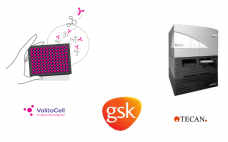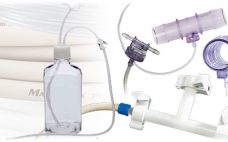The number of cell therapy product candidates based on mesenchymal stem cells (MSCs) has grown steadily since their clinical debut in 1995. As of June 2020, clinical investigators were evaluating more than 1,100 such therapies. Scaling up MSC production remains challenging, however. On 31 May 2021, Hilary Sherman (senior scientist at Corning Life Sciences) presented an “Ask the Expert” webinar describing her company’s efforts to facilitate MSC workflows. Sherman’s Presentation Easing Expansion: MSCs have strong differentiation capability and can be…
Author Archives: BPI Contributor
Ensuring Quality Oversight in Plasmid DNA Manufacturing
The landscape of today’s biopharmaceutical industry is changing rapidly with the introduction of novel drug products, such as personalized medicines. However, while this sector of the market is expected to have a major impact on patient care in the coming years, it also presents significant challenges during development and manufacturing. One such area is a gap in GMP quality plasmid DNA (pDNA) supply, an essential building block for viral vector and even mRNA based vaccines and therapies ― the latter…
Ask the Expert: A Novel Escherichia coli System for Controlled Release of Difficult-to-Secrete Proteins
Although Escherichia coli often enables dependable, highly productive expression of nonglycosylated recombinant proteins, the efficiency with which it secretes a target protein into culture supernatant can depend greatly on that molecule’s physicochemical properties. Some proteins remain trapped in periplasm, thus diminishing process yield and productivity. In June 2021, Marcel Thoen (head of Wacker Biotech’s Global Competence Center for Cell Line Development) described how his company’s improved ESETEC (E. coli secretion technology) solutions can address productivity challenges raised by difficult-to-secrete recombinant…
Ask the Expert: Critical Steps in Potency Assay Development
Biologics undergo extensive characterization to demonstrate their safety, purity, and efficacy. Jennifer Lawson (product manager for cell line, media, and testing solutions at Sartorius) highlighted the role of potency assays in that process. Because they reflect the complexity of biological systems, scientists must develop robust assays that will provide sufficient data for good-practice (GxP) applications. Lawson pointed out milestones in the bioassay life cycle and explored ways to help ensure method suitability. Lawson’s Presentation Development Criteria: Potency assay development requires…
Ask the Expert: HCP Analysis By Orthogonal Methods in Vaccine and Gene Therapy Development
Regulators require testing of drug products for process-related impurities throughout development to monitor product safety, purity, and efficacy. Low levels of most impurities can be inconsequential, but patient safety demands that host-cell proteins (HCPs) be eliminated or reduced to the lowest levels practical. Enzyme-linked immunosorbent assays (ELISAs) represent a key tool in that endeavor. Antibody-coverage analysis is one part of assessing a platform kit or custom HCP ELISA. In a 15 June 2021 webinar, Jared Isaac (senior scientist at Cygnus…
High-Throughput IgG Titer Analysis
This webcast features: Zoe Hughes-Thomas, Head Medicine Design Automation Team, and Celal Dari, Laboratory Science Apprentice, GSK Antibodies. A key cornerstone of pharmaceuticals, from oncology to immunology. But how do we quantify them? Existing methods have proven the process needs to be improved, from long assay turnaround times to discordant results. A key method of innovating the process includes embracing new technology including automation and new assays. The presentation will introduce aspects of current methods of automation that aim to…
Kuhner TOM For Off-Gas Analysis in Shake Flasks
To facilitate and speed up process- and media development, online measurement techniques for shake flasks accompany manual sampling for maximum information output per cultivation. Off-gas analysis gives oxygen transfer rate (OTR), carbon dioxide transfer rate (CTR) and respiratory quotient (RQ) as quantitative measures of the physiological state of the culture. On shake flask scale, multiple cultivations are usually run in parallel. Off-gas analysis should therefore be cost effective, easy to handle and versatile to match various applications. Therefore, we developed…
Cell Therapy Production: A Comprehensive Look at Key Elements of Success
Cell therapies offer tremendous potential to treat diseases for which there is often no treatment available. The global cell therapy market is strong and continues to expand. Market research predicts an annual growth rate of 5.4% reaching $8.83 billion by 2027. Cell and gene therapies continue to progress through the clinical pipeline with new cell therapy product approvals, expansion of approved indications for current products, as well as increasing awareness, acceptance, and use of these advanced biological products globally. This…
Improve Productivity and Operational Efficiency with Single-Use Technology
This webcast features: Rob Martindale, Product Manager, EMEA, Masterflex In many manufacturing environments, and especially in the biopharmaceutical market, there is a constant emphasis on making productivity improvements and streamlining every-day processes. One solution that many companies are turning to is the implementation of single-use technology. In this webinar, we will expand on what’s possible with single-use technology and then highlight practical ways single-use technology can make positive impacts on your workflow and on your bottom line. Just fill out…
Optimizing Control of Pump-Related Biopharma-Production Processes
In biopharma production, pumps are used in a variety of critical processing steps, most notably for liquid transfer that requires the creation and adherence to a required flow rate and pressure level. While this can be done manually through the reading of a pressure gauge and adjusting the motor speed if the pressure should venture outside of the acceptable range, this way is time-consuming and lacks the precision that an automated system can provide. Automated pumps became viable after they…






